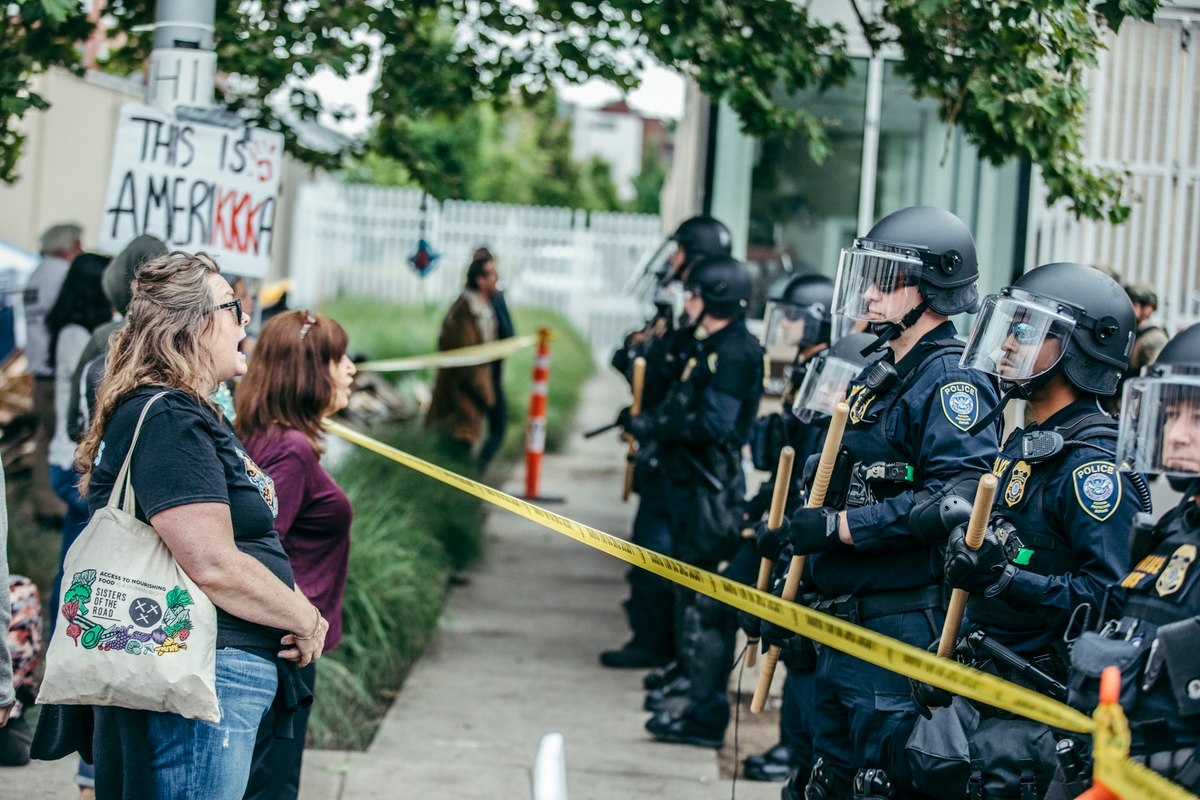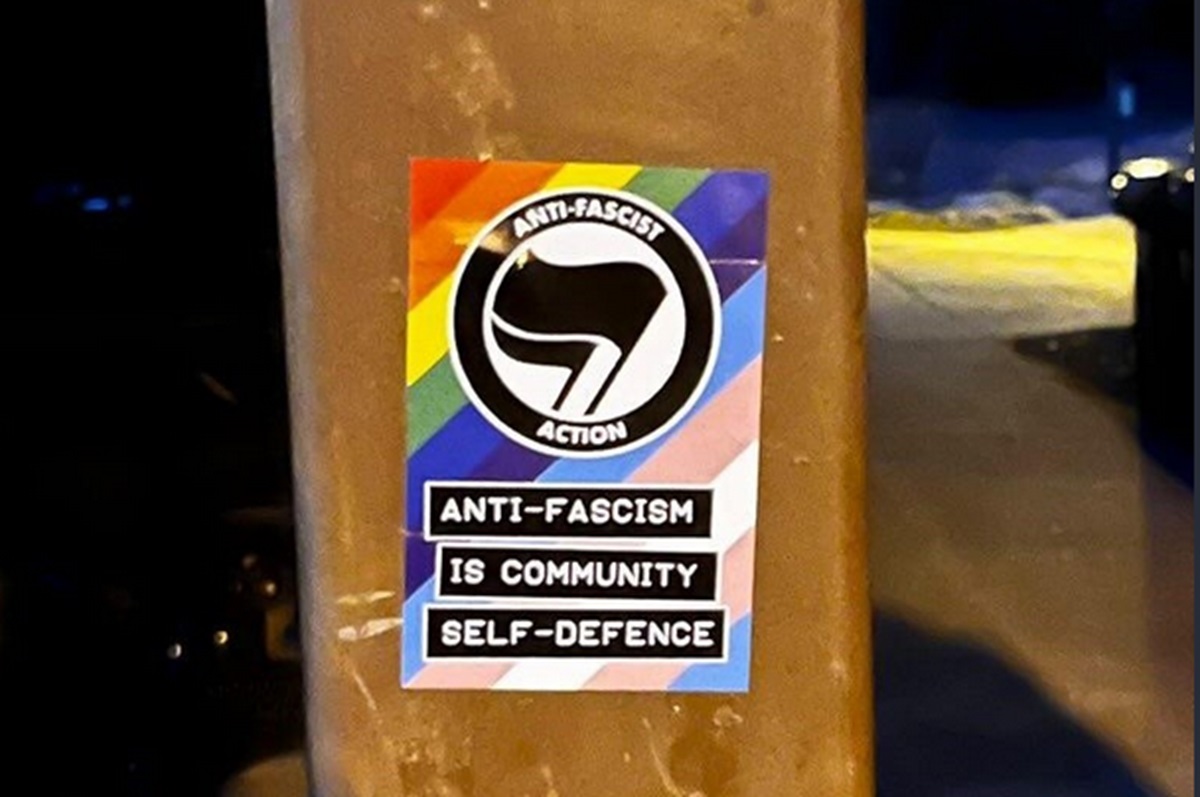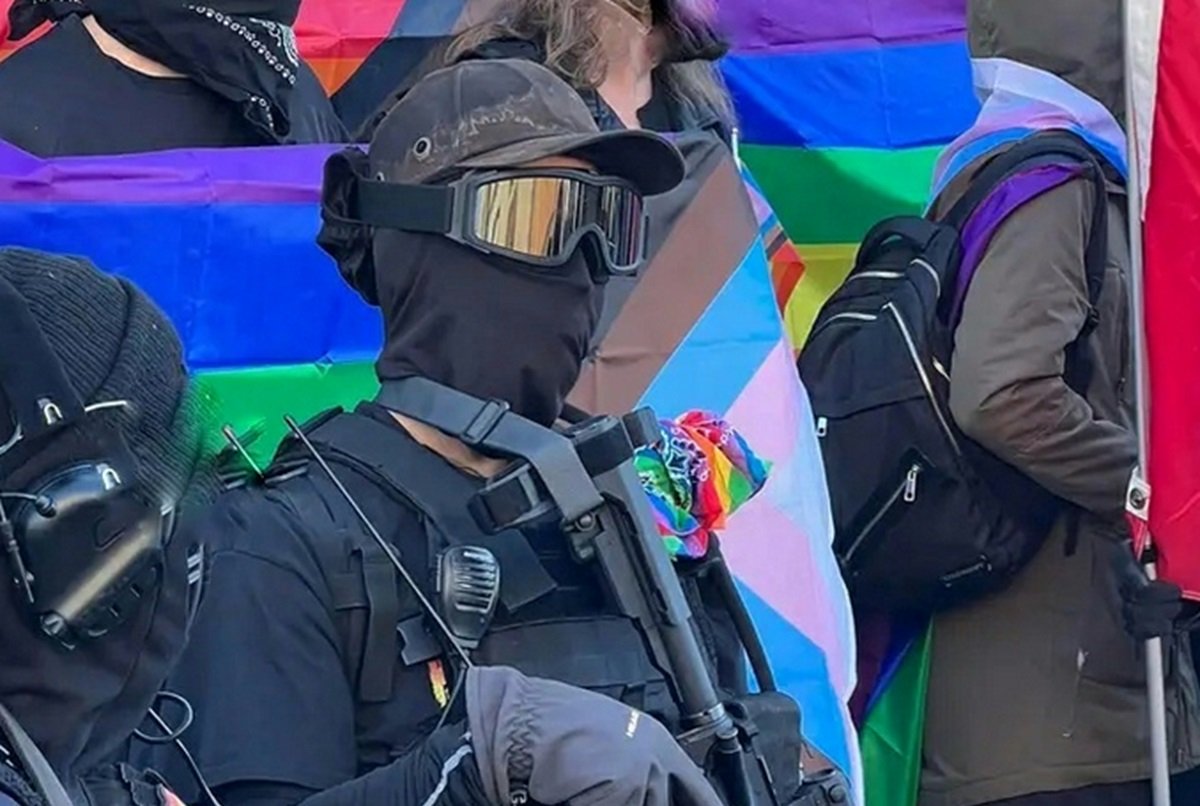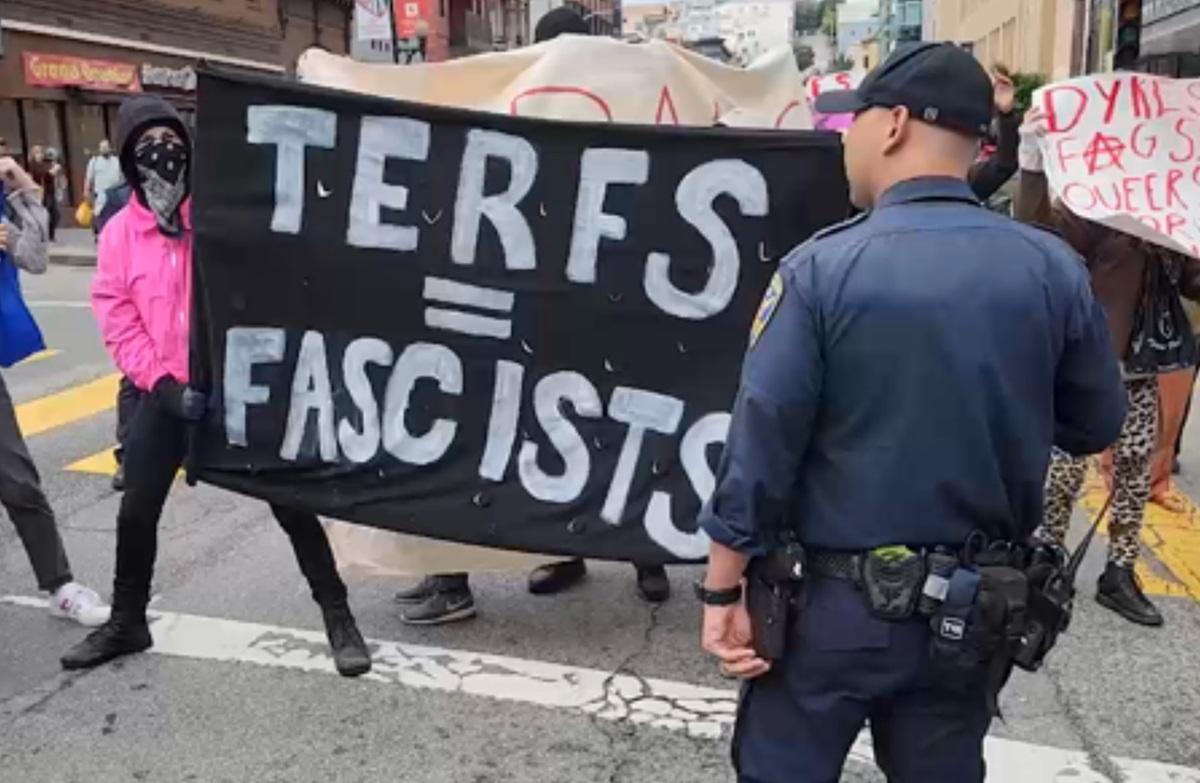Filed under: Anarchist Movement, Capitalism, Critique, US

Building on their idea of ‘insurrectionary councilism,’ the Radical Education Department lays out an analysis about how to build and gain ground out of social struggles, rather than having it dissipate.
How do we turn revolt into revolution today?
Anticapitalist resistance is surging in the face of a stagnating capitalism and the ruling class’s desperate turn to fascism. But from Occupy and Ferguson to the anti-ICE movement, uprisings are dissipating rather than escalating into fundamental, widespread challenges to ruling class power. Radical movements have struggled to develop the mass organizations and shared revolutionary strategy needed to create such challenges. How can revolutionary anarchists help transform revolt into a crisis of class rule?
A central task for revolutionary anarchists today, I argue, is multiplying and connecting spaces for (a) combining disconnected but sympathetic radical struggles, and above all (b) hammering out shared ideas of mass organizing and planning.
Finally, I ask: how would we create a shared revolutionary program for organization and strategy? What kinds of questions would we need to answer? What specifically could revolutionary anarchism bring to such a program? I end by sketching some of those questions.
The time to build revolutionary power is now.
Why a revolutionary program?
We have the chance to strike a powerful blow against a stumbling enemy.
Capitalism has been stagnating since the financial crisis 11 years ago. It is lurching towards another crisis.[1] Segments of the ruling class are turning to fascism in desperation to crush working-class resistance and restore its profit margins.
Crisis, stagnation, and repression—these are sparking a massive upsurge of revolts like the anti-ICE movement, anti-racist struggles, and militant antifascist, anarchist, socialist, and communist organizing.
But the recent explosions are more widespread and more powerful than we know what to do with. We don’t have the tools we need to connect uprisings into a revolutionary challenge to ruling class power. For instance, the important “Occupy ICE” movement is being swept away without a clear, mass, coordinated plan to build on its gains. The prison strike now faces this danger. “Occupy Wall Street” confronted the same problem. We remain largely reactive to the latest outrage. We struggle to channel radical power in durable ways for definite, large-scale, revolutionary strategic goals.
Too often, radical struggles focus on tactics. We hope that a revolution will come eventually, the accumulation of small-scale victories. Ending capitalism requires more. A systemic problem calls for a systemic solution.
But we also seem to be overwhelmed with revolutionary plans. Many anarchist, socialist, and communist groups have ready-made ideas about tactics, strategy, and organization. Their answers are often disconnected from the concrete mass revolts we are witnessing. Revolutionary programs tend to stay in the activist “silos” that have characterized radical organizing since the 1970s.
And to create a revolution, struggle must be on a mass scale. Capitalist firms exist only by extracting as much surplus as possible from the working class. At the same time, the ruling class pits groups of workers against each other—nation against nation, white workers against workers of color, men against women, cis-gendered people against non-binary people, the employed against the unemployed. White supremacy, patriarchy, transphobia, ableism—these help cement the racist, patriarchal bourgeoisie’s power. When workers fight each other, the ruling class can continue exploiting, dominating, colonizing, and waging imperial war. Radically challenging capitalism means widespread, intersectional class power that refuses to play capital’s games of domination.
The task ahead is combination, not isolation, of revolutionary efforts to help build the intersectional organizations we need. Combination here doesn’t mean an insipid “left unity.” It means connecting the various antiauthoritarian (even if not explicitly anarchist) currents that often lie at the heart of the most powerful struggles against capitalism, colonialism, patriarchy, and white supremacy today. More broadly, it means coordinating, across far left ideological and community divides, the radical struggles that can work effectively together without endless bickering—and that often informally overlap anyway.
All of this means the most pressing questions for radicals today are about strategy and organization. One of the most important things revolutionary anarchists can do, I suggest, is help create, multiply, and federate experimental spaces to hammer out collaborative answers to those questions. (Some of us in RED have begun experimenting with such spaces; see this and this).
I don’t offer my own revolutionary program here. Members of RED have a few contributions on this front—see this, this, and this. And for an interesting response and critique, see this.
My goal here is only to help spur the kind of shared, widespread discussions we need for building mass revolutionary plans.
Towards a revolutionary program: some questions
What are some of the basic questions we would need to answer together to create shared, mass, revolutionary organization and strategy? Here are a few.
Understanding capitalism: How does capitalism work today? What and where are its weaknesses?
- How does capitalism function—internationally and nationally?
- How is capitalism developing and changing?
- What weaknesses does that development show? How can revolutionary anarchists and their allies best exploit those weaknesses?
- How do its structures and developments play out where I am organizing?
Understanding the ruling class: Who is our enemy? What are their strengths and weaknesses?
- How is the ruling class organized—internationally and nationally?
- How does it enforce its rule and command obedience? Where and how specifically does it wield the power of the state and the economy against the working class?
- How is the ruling class’s power developing? How is the state, as its most direct weapon, developing? What weaknesses and strengths come with these changes?
- What are the most important sectors of the ruling class to target?
- How can revolutionary anarchists and their allies best exploit those weaknesses?
- How do the ruling class’s structures and developments play out where I am organizing?
Understanding the working class: How is the working class structured today? Where is it the most radicalized? Where does it have the most potential power?
- How is the working class structured—internationally and nationally?
- How is the working class developing and changing?
- What strengths come with that development? How can we help to seize and enhance those strengths?
- How do the working class’s structures and developments play out where I am organizing?
- Where are the working class’s most militant and powerful sectors? What “layers” within important sectors are the most militant and powerful? What is their relationship to other, more conservative “layers”?
- How do those structures play out where I am organizing?
- How can we help more militant and powerful sections of the working class infect the other layers and draw them into the struggle?
- What non-working class/non-bourgeois sectors exist? Which parts of the petty bourgeoisie, for example, or the mass of students, could be won over to the cause of revolution? How?
- Where and how is the working class best organizing itself against capitalism—internationally, nationally, locally? What lessons can we draw from that resistance for the future?
Strategy and tactics: What are our long-term and medium-term goals? How do we work towards them in our short-term actions?
- How do we picture the overall, long-term strategic goal of a world without capitalism? What would that kind of society look like? If we can’t decide on this now, can we create spaces to continue discussing and experimenting with long-term ideas as part of our struggle, to stay inspired and excited?
- What intermediate or medium-term goals do we have? What parts of local, national, and international capital are we going to target for revolutionary action—what sectors, what firms? Why and how? How will their power be radically disrupted? What are the desired results and how do they fit into the larger plan?
- What short-term tactics do we need to build towards our intermediate and long-term goals? What “molecular,” small-scale tasks will build towards intermediate and long-term ones?
- As we hammer out answers to these questions: what dominant strategies and tactics are guiding revolutionary organizations today? What works best and what doesn’t?
- What lessons can we draw from past organizing for the present? Where are the most inspiring and relevant struggles to be found and how can their ideas be best incorporated into the present?
Organization: What kinds of organizations will help us build the strongest possible working class power and achieve our goals?
- What organizations do we need to achieve our short-, medium-, and long-term goals?
- How can we ensure spaces that are safe, caring, and nurturing for our comrades, especially those who are the most punished by capitalism and targeted by the state? How can we learn from each other to make sure our organizing is perfectly hostile to sexual assault, racism, misogyny, transphobia, ableism, and all other forms of domination? How will grievances be handled and accountability maintained?
- How should decision-making work on a mass scale? Will consensus—the “common sense” for many groups today—work to build something mass and revolutionary? Are there other kinds of decision-making that could be more effective? What works for other groups and what doesn’t? How can we make sure we’re not overly dogmatic about decision-making—perhaps by using hybrid models that ensure we’re the most powerful we can be?
- How can our organizations cut across the silos we often find ourselves in? How can they be deeply intersectional in order to combat the intersectional domination of the ruling class?
- How can we best avoid harmful versions of “left unity” that only paper over irreconcilable differences between radical groups (some communists and some anarchists, e.g.) only to create schisms later?
- As revolutionary anarchists, how can we help push mass organizing as far left as possible? How can we be non-dogmatic, and yet help challenge many radicals’ fixation on the state and elections, wholly reject liberalism and liberal influence, and build radically equal federations of horizontal power?
[1] See Michael Roberts, The Long Depression: Marxism and the Global Crisis of Capitalism (Chicago: Haymarket, 2016); Andrew Kliman, The Failure of Capitalist Production: Underlying Causes of the Great Recession (London: Pluto Press, 2011).





